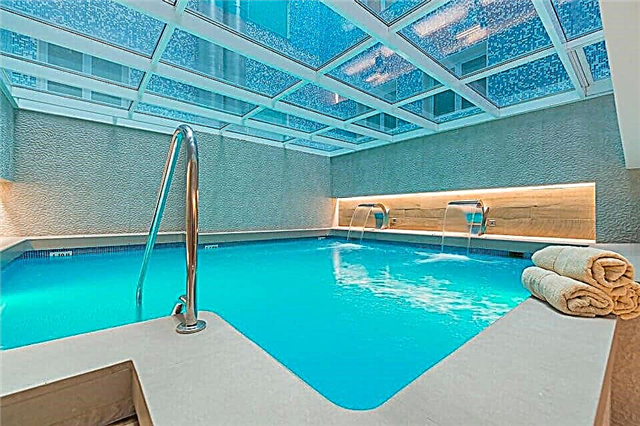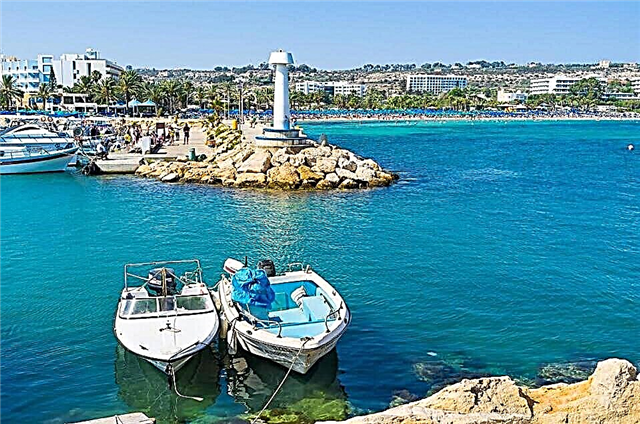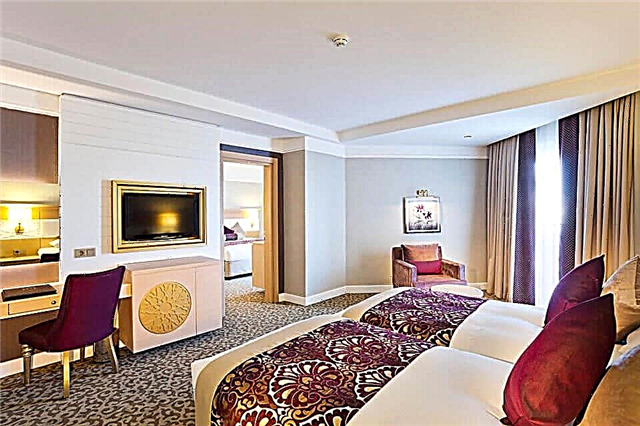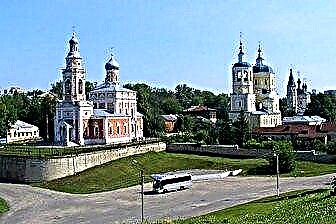During the period of feudal fragmentation of Russia, Serpukhov was the southern outpost of the Moscow principality, defending the borders from the aggressive raids of the Tatar-Mongols. The first mention of the city is found in the spiritual literacy of Ivan Kalita. Under Peter I, industry began to actively develop here.
The main attractions for which it is worth coming to Serpukhov are cathedrals and monasteries that still remember the reign of the valiant prince Vladimir the Brave. Also noteworthy are the buildings of industrial architecture: factories and manufactories, shopping arcades and Gostiny Dvor. The local art gallery is a coveted object for connoisseurs of art, and nature lovers will appreciate the picturesque landscapes of the Prioksko-Terrasny reserve.

The best hotels and hotels at affordable prices.
from 500 rubles / day
What to see and where to go in Serpukhov?
The most interesting and beautiful places for walking. Photos and a short description.
Trinity Cathedral on Cathedral Hill
The temple is located in the city center on the territory of the former Serpukhov Kremlin. Some sources claim that the cathedral was founded in the XIV century, but the stone building was built only in the XVI century. After some time, the facades were rebuilt in the Empire style. Also, in the appearance of the building, the features of the Moscow Baroque and Classicism are clearly traced. The elegant tent-roofed bell tower stands out against the background of the rather austere architecture of the temple.

The walls of the Serpukhov Kremlin
A complex of fortifications of the 16th century, from which only fragments of walls and foundations have survived. The first fortress on the high bank was erected in the XIV century; two centuries later, wooden buildings were replaced by stone ones. At the end of the 16th century, when the city lost its military significance, the Serpukhov Kremlin began to collapse and eventually it was dismantled. The remains of the structure were used for the construction of the Moscow Metro in 1934.

Ensemble of Posad temples
The ensemble includes three churches: the Holy Trinity, Elijah the Prophet and the Assumption. Trinity Church is one of the oldest in the city; it was built taking into account local architectural traditions. Ilyinsky Church was built by Moscow craftsmen at the expense of Serpukhov merchants; earlier there was a wooden building in its place. The Assumption Church is the youngest of the entire ensemble; the building appeared in the middle of the 19th century thanks to donations from the industrialist N. Koshin. All temples are close to each other and literally touch by fences. According to the established tradition, they are perceived as a single architectural complex.

Cathedral of St. Nicholas Bely
Temple of the XIX century, built in the Moscow Empire style from bricks and white stone. Architecturally, it is a quadrangle with an apse and classical porticoes. In the middle there is a semicircular tower topped with a dome, on the side there is a multi-tiered bell tower with the largest bell in Serpukhov. In 2005, the temple was re-consecrated after restoration (in Soviet times, there was a pasta factory inside).

Vysotsky monastery
The construction of the monastery was blessed by Sergius of Radonezh, leaving his disciple Athanasius as the first abbot. The main architectural attraction is the Conception Cathedral, built during the time of Boris Godunov. Also noteworthy are the churches of St. Sergius of Radonezh, the Protection of the Most Holy Theotokos of the 17th century and the later Church of All Saints, erected at the end of the 19th century.

Vladychny monastery
The women's monastery, founded in the XIV century by Metropolitan Alexy, to whom, according to legend, the Mother of God appeared and ordered to build a monastery. Initially, the community was inhabited by male monks, only at the beginning of the 19th century it was transformed into a female one. Architectural monuments of the complex: Vvedensky Cathedral, temples of St. George the Victorious, St. Alexy and Martyr Theodotus of Ankir.

History and Art Museum
Picture gallery, founded in 1920 and considered the largest in the Moscow region. The collection is housed on the territory of a 19th century merchant mansion built according to the project of R. I. Klein. The basis of the exposition was the frequent collection of the aristocrat Yu. V. Merlin, who acquired works of art at the antique market, where the property of ruined noble families was sold. The collection contains about 400 paintings and drawings by Russian and Western European artists of the 16th – 19th centuries, as well as objects of decorative and applied art.

Peacock Museum
The image of a peacock is present on the coat of arms of Serpukhov. In heraldry, it symbolizes pride, dignity and glory. An exposition dedicated to this bird appeared in the Museum of Local Lore, eventually becoming an independent exhibition. It consists of figures of peacocks, executed in different techniques from different materials. Tour guides will tell visitors about heraldry, meanings of symbols and the history of the appearance of coats of arms.

Monument to the Soldier-Liberator
The figure of a soldier-liberator with a sword and a little girl in her arms is a copy of the monument of the same name located in Berlin's Treptower Park. It was made as a model before the monument that adorns the German capital today was created. The sculpture is 2.5 meters high and stands on a rectangular pedestal. In 2009, the monument was moved to Cathedral Hill.

Monument to Vladimir the Brave
The monument was erected in 2009 in honor of Prince Vladimir Serpukhovsky, who ruled the estate in the XIV century. He received the nickname "Brave" thanks to the valor shown in numerous battles. By the way, he played one of the main roles in the Battle of Kulikovo and contributed to the expulsion of the Tatar-Mongols from Russian territories. The prince is depicted in full military attire. Residents of the city raised funds for the construction of the sculpture.

Railway station building
The railway station was built in 1866, when Serpukhov was actively developing as an industrial city. The building was erected in the eclectic style according to the project of F.K. Knorre. The architectural appearance of the building has been preserved in almost its original form, the reconstruction has affected only the station square. A distinctive feature of the design is the rows of wide arched entrances and window openings located on the central facade.

Dam on Nara
A hydraulic structure built in the first half of the 20th century to supply water to industrial enterprises and maintain the water level in Nara. It is an unremarkable concrete structure, which, however, looks quite picturesque from the banks thanks to the streams of water flowing down with noise along the surface. There is a walking area and observation decks for about half a dollar.

Estate Pushchino-on-Nara
Ruins of a late 18th century mansion built in the style of Russian classicism by an unknown author. The final destruction of the monument took place in the 1970s, when local residents began to pull apart the structures for building materials. A decade later, they wanted to restore the estate, but found the project unprofitable. At the moment, the house continues to collapse and risks disappearing completely.

Ostrich farm "Russian ostrich"
The farm was founded in 1999 and became the first such facility in Russia. She specializes in breeding ostriches and supplying their meat to restaurants in the capital. Somehow the owners even tried to raise camels, but the animals did not take root in the cold climate near Moscow. Also, the institution is open to tourists. After the tour, you can buy exotic meat or take part in a shell painting workshop.

Prioksko-Terrasny Reserve
A protected natural area that received the status of a UNESCO Biosphere Reserve in 1979. Its territory is home to rare species of birds and mammals, including bison: American steppe bison and European bison, which are kept in a special nursery. The reserve was founded in 1945 and covers an area of 50 km². The attraction is visited by about 60 thousand people annually.












